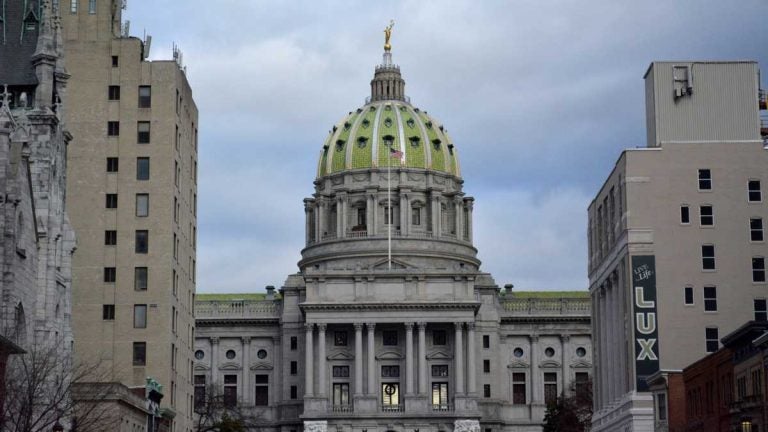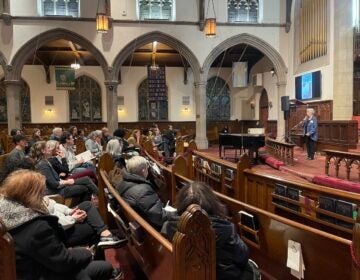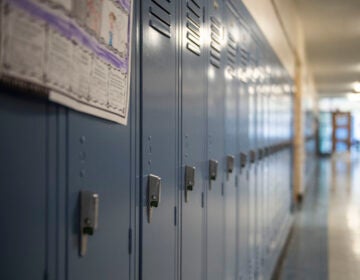Study at issue in Pa. school funding case revised to show low-income students get less
Researchers acknowledged Monday that an analysis used by Pa. officials to argue that the state’s funding system doesn’t shortchange low-income students was flawed.

Pennsylvania capitol building in Harrisburg, PA. A study at issue in the state school funding case was revised to show poor kids in Pennsylvania get less. (Kevin McCorry/WHYY)
This story originally appeared on Chalkbeat Philadelphia.
Researchers acknowledged Monday that an analysis used by Pennsylvania officials to argue that the state’s funding system doesn’t shortchange poor students was flawed — and the revised version comes to the opposite conclusion.
The Urban Institute updated a national study of school funding patterns to fix how it accounted for funds flowing to charter schools. The results now show that students from low-income families in Pennsylvania have received slightly less funding for their schools than wealthier students for many years.
“When you account for these payments, you do see a regressive funding formula,” said Kristin Blagg, a researcher with the Urban Institute, a D.C. think tank. “This indicates that there’s a need for a closer look at how the funding formula is operating in Pennsylvania.”
It’s a notable shift, as this seemingly basic question — Do poor children in the state typically attend schools that are less well funded? — has been debated during the recent high-stakes litigation over Pennsylvania’s school funding system. The revised analysis bolsters one key claim made by the families and school districts that brought the case, who argued that system is unfair and inadequate.
It’s not clear if this could have any effect on the case, though. Closing arguments in the trial concluded in March, and the judge is set to rule following arguments over additional legal issues in July.
An attorney for Republican Senate President Jake Corman, who is a defendant in the case, did not respond to a request for comment. Lawyers for the plaintiffs declined to comment.
During the trial, the two sides have offered starkly different characterizations of school funding in Pennsylvania. Plaintiffs argued that the highest-poverty districts typically get less funding, but the defense has countered this with analyses suggesting otherwise.
Jason Willis, an analyst for the consulting firm WestEd, shared data purporting to show that many of the highest-poverty districts in the state were also some of the best funded. Another defense witness, Max Eden, used the Urban Institute’s analysis from prior years to defend the state’s funding approach. “Pennsylvania is pretty darn equitable, all things considered,” said Eden, a research fellow at the American Enterprise Institute, a conservative think tank.
In both cases, plaintiffs’ attorneys pushed back. They contended that these analyses failed to account for funding districts receive and then pass along to charter schools, artificially inflating districts’ spending numbers.
After this came up in court, Chalkbeat asked the Urban Institute about its findings and Blagg began reviewing the organization’s methods. She concluded that the concerns were valid, and the Urban Institute released revised results Monday. The changes significantly affected results in Ohio and Pennsylvania.
Previously the Urban Institute had found that poor students in Pennsylvania received 4% more funding than non-poor students in the 2018-19 school year (the most recent available). Black and Hispanic students received 7% more funding than students of other racial and ethnic groups.
Under the revised analysis, though, poor students in the state actually got 3% less, and Black and Hispanic students received 6% less than other students.
That means Pennsylvania is one of just a handful of states where students from low-income families received less money for their schools than wealthier students do. That’s worrying, Blagg said, because there’s good reason to think that poor children need extra resources.
“Broadly, to support the outcomes of low-income students, we would want to see more dollars flow to them,” she said.
Other researchers have also found that poor students get less in Pennsylvania.
Matthew Kelly, a professor at Penn State and a witness for the plaintiffs, found that the wealthiest districts in the state spend about 20% more per student than the poorest districts, a difference of thousands of dollars per student. That’s similar to another analysis from the Shanker Institute, a think tank affiliated with the American Federation of Teachers.
The gap in the Urban Institute study is much smaller, likely because it focuses on all of the state’s poor students — rather than schools or districts — and many of those students don’t attend high-poverty schools.
The Urban Institute is not the first to correct its findings due to the complexities in accounting for charter school funding. The Education Law Center, a New Jersey-based funding advocacy organization, previously issued a similar correction to its report on school funding trends.
WHYY is your source for fact-based, in-depth journalism and information. As a nonprofit organization, we rely on financial support from readers like you. Please give today.







